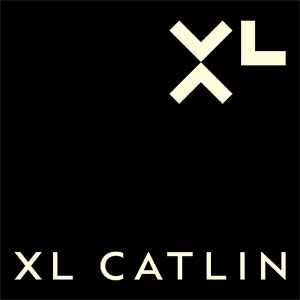Risk Scenario
Scotch and Water
Disclaimer: The events depicted in this scenario are fictitious. Any similarity to any corporation or person, living or dead, is merely coincidental.
Part One
Ray Ames looked out his office window to see his workers unloading cases of wine. Ray knew at a glance what was in them.

It was last year’s Bordeaux. Nothing great about it, but at least the prices these days for it were coming down.
As familiar as the view from his window was, it was more interesting to him than what was on his computer screen. On that monitor was a copy of the master insurance policy his company used to cover its European land holdings.
Ray and his two brothers ran Ames Importing, a liquor and wine importing business based in New Paltz, New York. The company was a taste maker in New York and surrounding states with a following that went back three generations to company founder Charles Ames.
Ray didn’t have too much to complain about. He made a good living. But there’s always something.
In Ray’s case that “something” was that as the only brother with a business degree, he handled finances, including insurance and compliance.
Over the past seven years, though, he picked up what he could and built the company’s global insurance program.
In addition to its business importing wine and liquor, Ames Importing owned two related businesses located within the European Union. One was a three-acre Rhone River Valley vineyard; very well thought of, especially for its Gamay. The other was a small distillery on the Scottish island of Islay.
Islay Scotch had been on the upswing lately. There were some big name brands involved there and a lot more foreign investment.
The land holdings across the sea were viewed as treasures by the Ames Family. Both added a cache to the Ames Importing brand.
Ray’s global insurance program consisted of a U.S.-issued master policy that provided “wrap-around” coverage. This coverage supplemented Ray’s local coverages and was designed to cover any gaps.
Ray didn’t know much more about it.
What he watched was the price of the premiums, which fell a couple of points per year over the last five years. There was only one recent claim, for hail damage to the Rhone River Valley vineyard three years ago.
As he looked at the master policy, Ray felt a tinge of warmth toward his Scottish distillery manager.
There were no claims at the distillery, not even workers’ comp, for the seven years Ray oversaw the company’s global insurance program.
Ray scanned the policy one more time and then e-mailed his broker.
“No changes. Please place the renewal.”
Part Two
This was one of the parts he liked.
Ray and his brother Adam stood elbow to elbow in a restaurant in Boston.
Before them were bottles of vintage Ports. Ames importing and three Portuguese producers were hosting a tasting for Boston’s better sommeliers and wine buyers.
Ray was enjoying the atmosphere and the event and was jarred when his phone buzzed.
It was the office. Now?
“Ray.”
“You got me, what’s up?”
It was Sandra, his office manager.
“I’ve got a letter here I think you need to see.”
“Why?”
“It’s from the Scottish Environment Protection Agency. They’re alleging pollution to the River Loughie from our distillery.”
***
The letter requested Ray’s appearance before the agency in Stirling, Scotland.
The allegations were that discharges from the distillery damaged fish populations. The Scots prize their salmon as much as their whisky and their golf links, so this was no light matter.
There were additional allegations that the pollution harmed the reputation of a local breeder of Scottish Highlander cattle. The farmer trades on the principle that his cattle get the purest food and water.
Digital journalism spread the news that the River Loughie was compromised and that salmon were dying. The news that his cattle were possibly drinking sullied river water has the farmer preparing a lawsuit.
Ray’s focused on the operational problems that led to the discharge. He flies to Scotland without even calling his insurance broker.
In front of the agency in Stirling, Ray is incredulous at what he hears. Under the European Union’s Environmental Liability Directive, Ames Importing is being held responsible not just for polluting the River Loughie, but for the cost of cleaning it up.
Under this interpretation of the principle, “the polluter pays” the local jurisdiction is given a lot of power in determining how well the problem is cleaned up. Until authorities are satisfied, the polluter keeps paying. The evidence from agency scientists is that the distillery was polluting the river for at least two years.
Ray also finds out that the company is facing a separate lawsuit for third party damages.
After doing some research into what remediation might cost, Ray gets on a call with Adam and his other brother Hank and lays out the figures.
“How much of this are we insured for, do you think?” Hank asks.
“I need to check into it,” Ray responds. “I haven’t called the broker yet.”
“I’ll call him,” Ray says, not wanting to be told by his older brothers to do so.
Part Three
In addition to its master global policy, Ames Importing has locally placed environmental, general liability and property policies. The issues the company has in complying with the environmental liability directive are bad enough. But when the company’s insurance policies come under the scrutiny of regulators, things get worse.

An inquiry by the company’s Scottish broker into its locally placed insurance provokes an investigation from insurance regulators. It’s possible that the master policy issued by Ames’ U.S.-based carrier is non-compliant.
Essentially, the master policy, because it is issued by a U.S.-based carrier, is unlicensed. In some jurisdictions this wouldn’t matter, but in some, like Scotland, it does.
Not only are there gaps in the coverage, the placement of the master policy coverage itself could now be non-compliant.
All of this probably wouldn’t have mattered 10 years ago. But times have changed. Not only is Scotland eager to have its first case for water damage under the environmental liability directive, financial regulators in Europe are more closely scrutinizing global programs.
At first, Ray’s broker was in touch with him but now Ray’s not sure what is going on. His attempts to communicate with his broker are being thwarted by the fact the broker and the U.S.-based carrier are under investigation from regulators.
Attorneys for both the carrier and the broker are advising their clients to keep mum until this gets sorted out.
The regulators indicate that the carrier and the broker not only should not have placed the non-compliant coverage but had a duty to inform Ames Importing that the coverage was non-compliant.
“You’ve got to be kidding me,” Hank says, when Ray, Hank and Adam get on a conference call together.
“Whoever knew insurance could get this complicated?” Adam said.
“I didn’t,” Ray says.
“Now what do we do?” Adam asks.
There are several tasks that need to be addressed right away. Uncovered by insurance, the company has to fix the breakdown in its waste water treatment technology.
The company also has to prepare a defense against litigation being brought by the cattle farmer, and an action by a local fisherman’s group who allege that their prized salmon fishery is harmed.
Limits on the local environmental coverage appear to be inadequate. The general liability piece of the global program’s master policy might not even be in play. But Ray is in the dark here and his broker is now giving him tumbleweeds.
What is apparent is that Ames Importing is about as naked as it can be in a foreign jurisdiction.
Word is that Chinese investors are grabbing every vineyard property that they can along the Rhone.
Ames Importing is going to have to sell off its prized vineyard in France to pay for its troubles in Scotland; sell it in a hurry.
As he looks up at his grandfather’s photo on his office wall, Ray can only be thankful that company founder Charles Ames is not alive to see this day.
Summary
A U.S.-based importer finds itself in hot water when one of its overseas holdings has an environmental event that results in civil litigation and fines from regulators.
1. Review your policies annually: Even if your policies aren’t renewed annually, you should be reviewing them annually. The regulatory environment is changing constantly. Ames Importing could have avoided a lot of trouble if it had evaluated its environmental exposures, whether it had a recent event or not.
2. Use professional help: Ray Ames would be a good guy to taste wine with, but he probably wasn’t the best person to have the sole responsibility of insuring that the company’s coverages were adequate and up to date. Use professionals, a broker or risk management consultant – that is what they are there for.
3. Know local laws: If you own a property or business concern in a foreign jurisdiction, you have a fiduciary responsibility to be well-versed on that jurisdiction’s laws and regulations. This means not only compliance with environmental or labor laws, but the insurance regulatory environment.
4. When in doubt, insure the money: The “workaround” in this case would have been to insure the financial interest of Ames Importing in the Scottish Distillery rather than insuring the distillery itself. This was not an option the company explored but doing so would have saved the company a lot of trouble.
5. Question your broker: If you’re going to pay a professional, make sure you know how to hold their feet to the fire. Prepare a list of questions to ask your broker on an annual basis and then document their response. As your advisor, it’s their responsibility to be up to date on regulatory compliance issues. They should be made to document this and be held accountable to it, legally if necessary.












